A New Pedestrian Flight Path
Seattle’s ties to the aviation industry are well known; the city is the birthplace of Boeing and still the center of the company’s assembly operations. So it’s not surprising that Seattle’s Museum of Flight, located adjacent to Boeing Field, is one of the largest air and space museums in the world. This striking 340-ft steel pedestrian bridge links the current museum to an exhibit space and future development site across a busy arterial.
Size
340 ft. span
Year Complete
2009
Location
Seattle, WA
Project Tags
Awards
Regional Award, Illumination Engineering Society, 2010
Project of the Month, AIA, 2009
Arthur G. Hayden Medal, International Bridge Awards, 2009
Merit Award, American Institute of Steel Construction, 2009
Civic Design Citation Award, AIA Washington Council, 2008
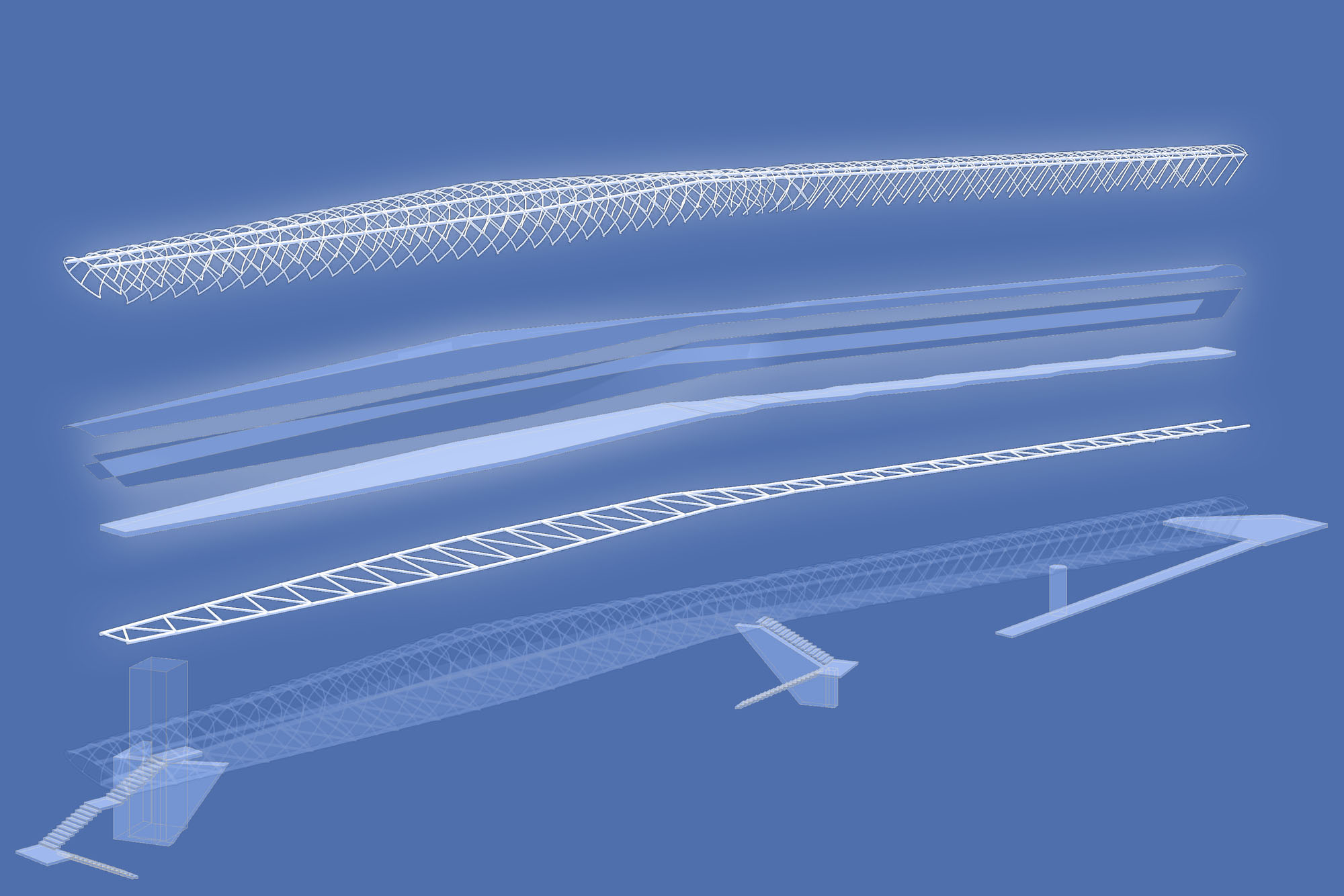
Vapor Trail
A conventional, utilitarian public works bridge design would have been possible, but inadequate to convey the spirit of the museum and the local aviation history. Instead, the bridge’s design is inspired by the phenomenon of a contrail, a stream of crystallized vapor created in a plane’s wake. The metaphor is carried out in the bridge’s unusual tube-shaped truss design, made of crossing circular steel pipes surrounding an inner glass enclosure. The bridge interior includes exhibit panels describing aviation history in the area, as well as colored LED lights along its path and a sound installation by local artist Paul Rucker with audio sampling from aerospace history and nature.
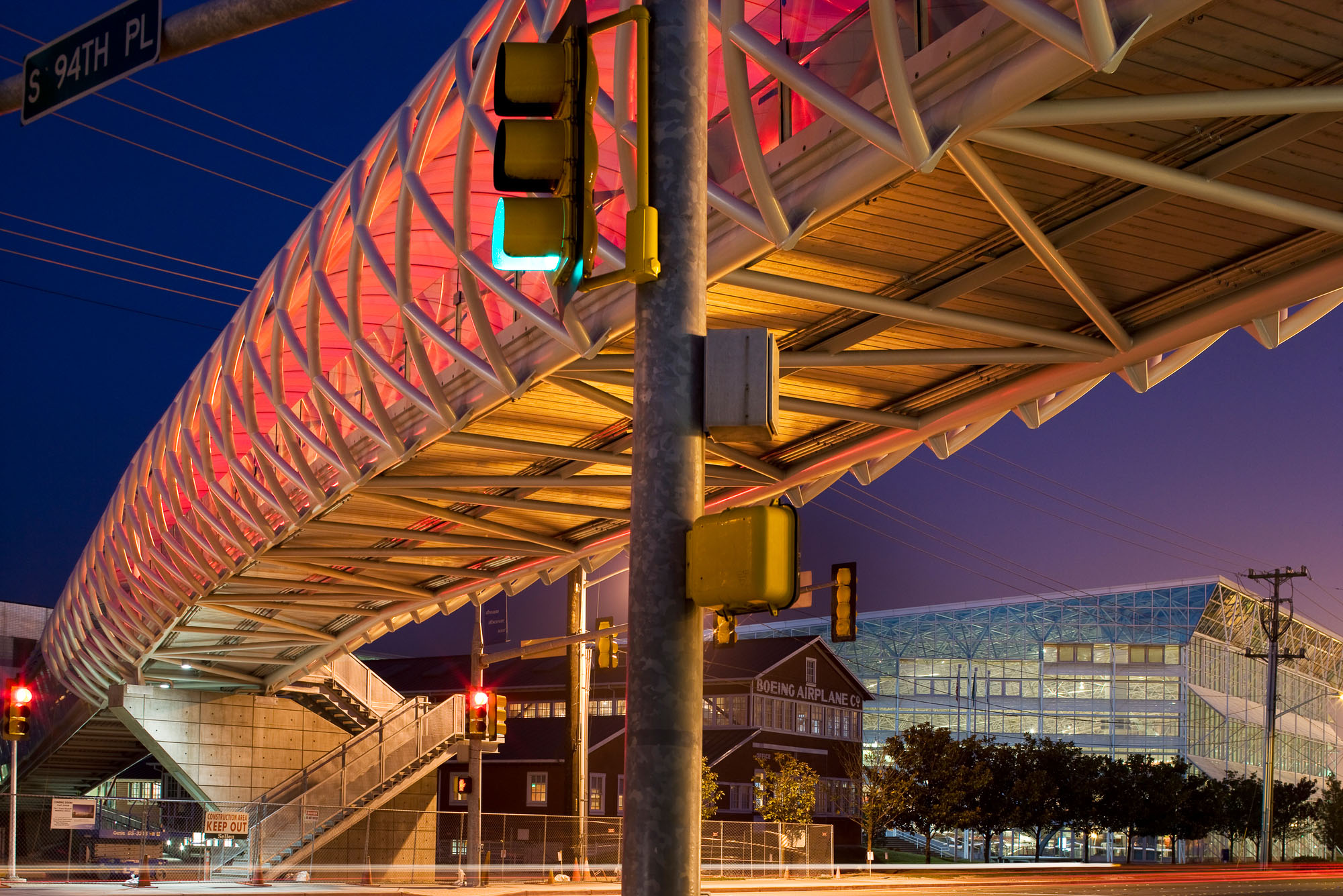
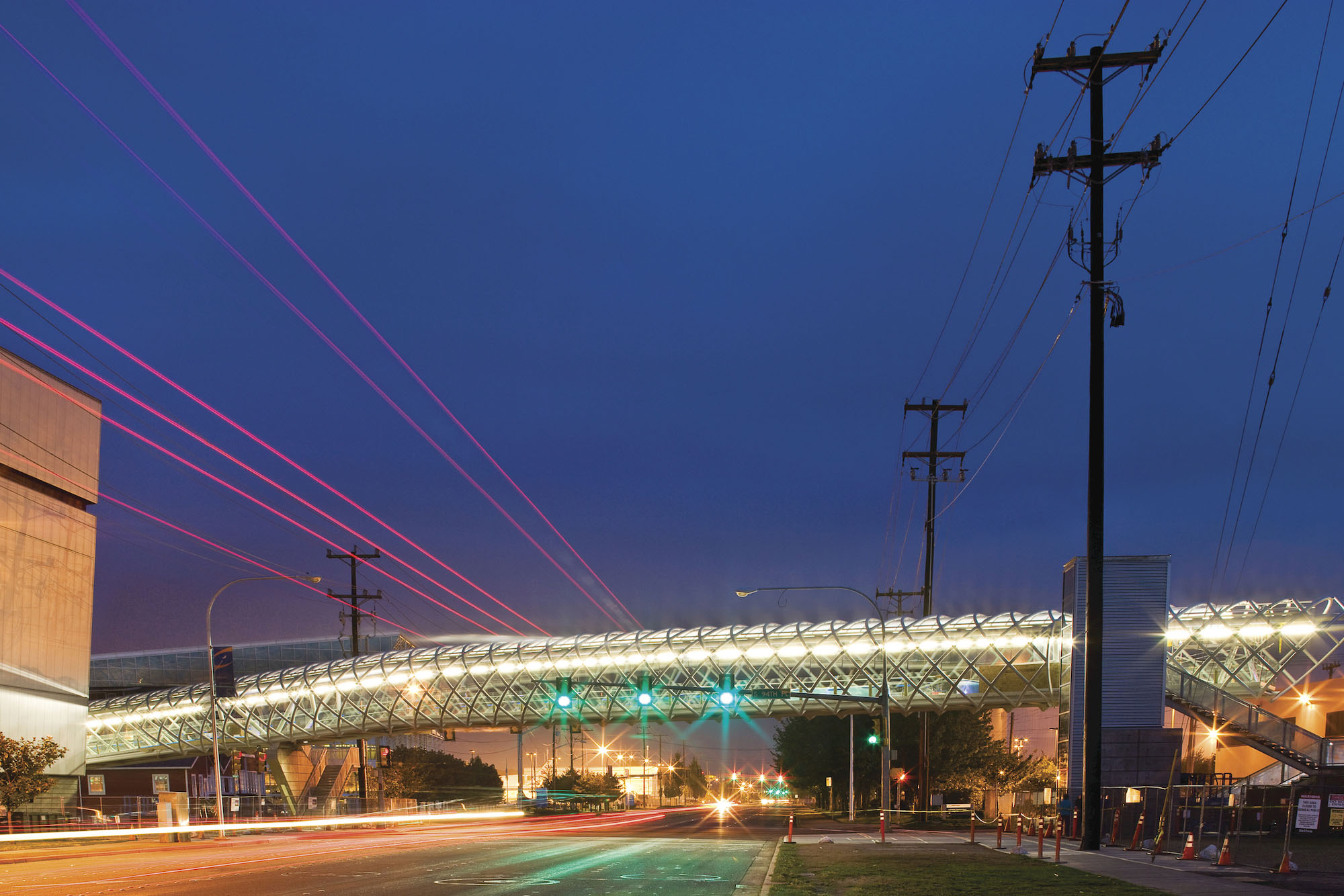
This structure is as beautiful as it is functional and will surely take its place as one of the most innovative architectural landmarks in Seattle.
Christine Gregoire, Former WA State Governor
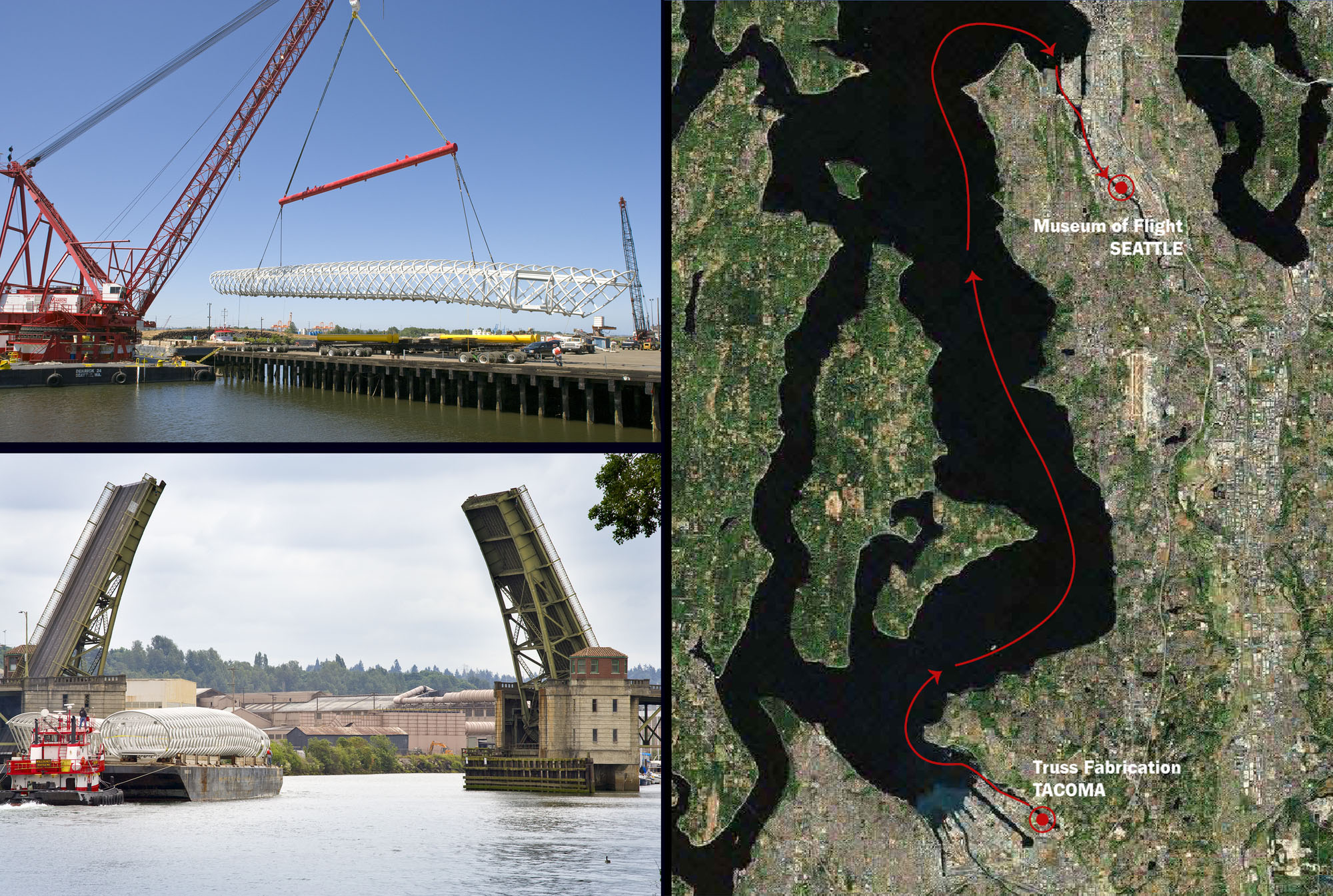
Not Your Ordinary Truss
The unique structure of the bridge evolved from the design collaboration between the architect, structural engineer, and steel fabricator. By bringing these parties together as early as possible in the design process, the team was able to push the design beyond a conventional solution toward something extraordinary. Through a series of creative charrettes, we worked with structural engineer Magnusson Klemencic Associates to devise a unique structural design that didn’t rely on conventional truss webs, but instead distributed the vertical shear in the bridge structure through a matrix of curving steel pipes. The cross-section of the bridge is widest at the center of the span, tapering at its ends as if the contrail was dissolving into the sky.
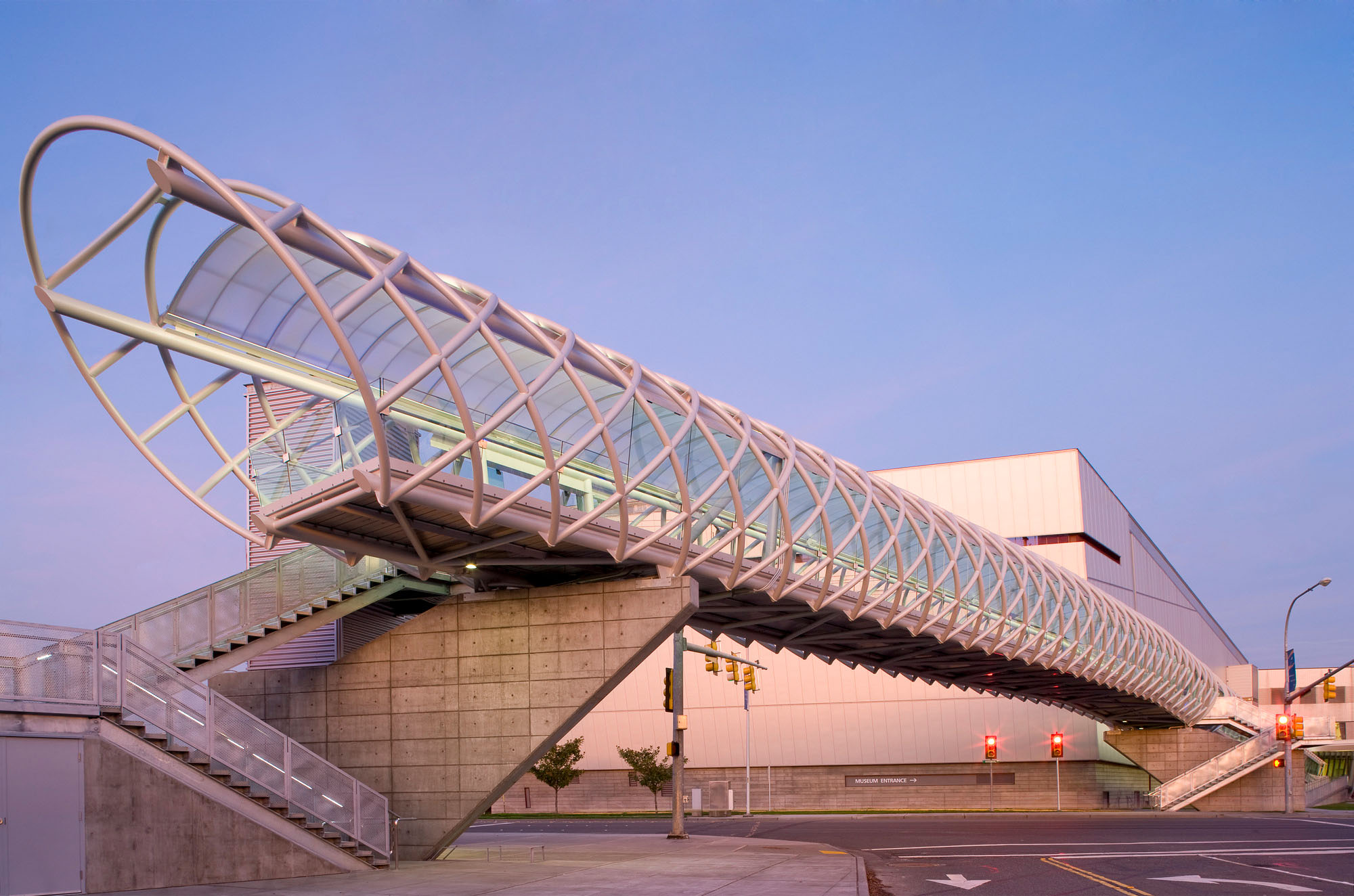
Tapered and Tubular
The result is a complex yet elegant 340-ft-long bridge made of crossing circular steel pipes, spanning 140 ft across a major road. The main tube-shaped truss, measuring 200 ft in length, is composed of a series of crossing 5-in.-diameter pipe hoops tilted at 45°. The radiused bend of the hoops varies from 22 ft at the center of the span to 19 ft at the tapered ends. Although the curvature of the hoops is a true radius, when tipped at an angle an elliptical interior space is created. In total, the project uses approximately 10,000 linear ft of steel pipe weighing a total of 190 tons. Within the truss, the semi-enclosed environment protects pedestrians from Seattle’s infamous gray and rainy weather. Overhead, a translucent polycarbonate roof suspended beneath the overhead steel pipes filters direct sunlight while glass panels on the south blocks the winter winds.
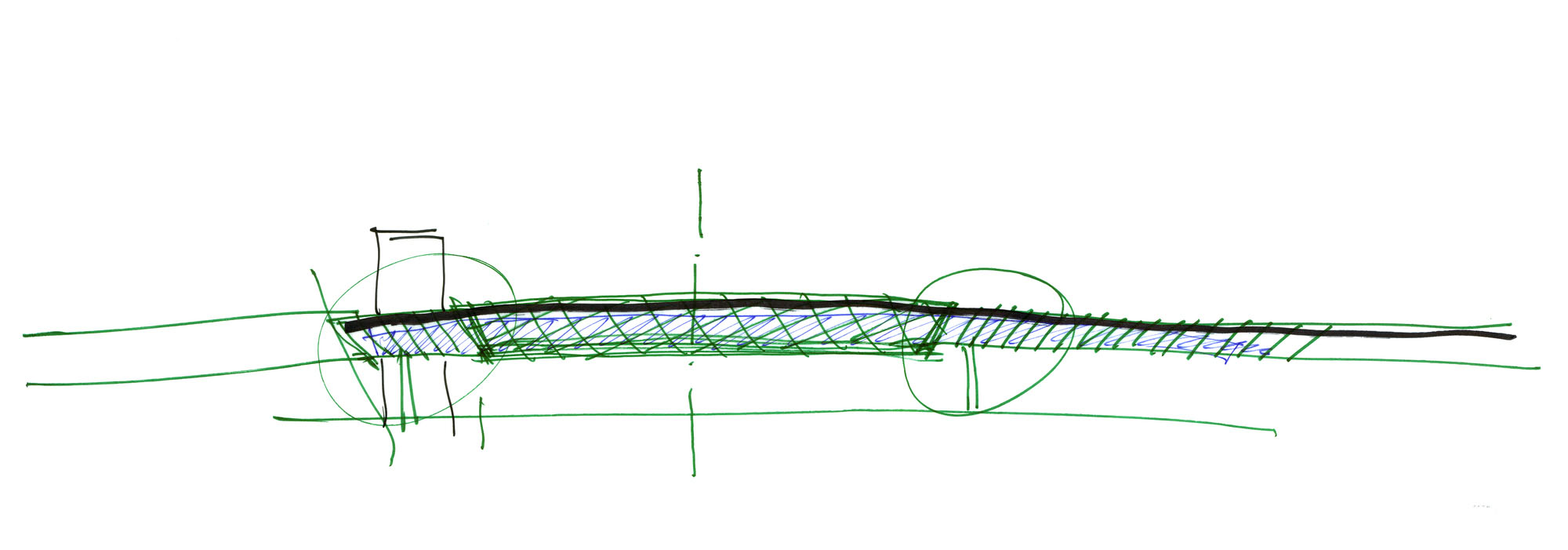
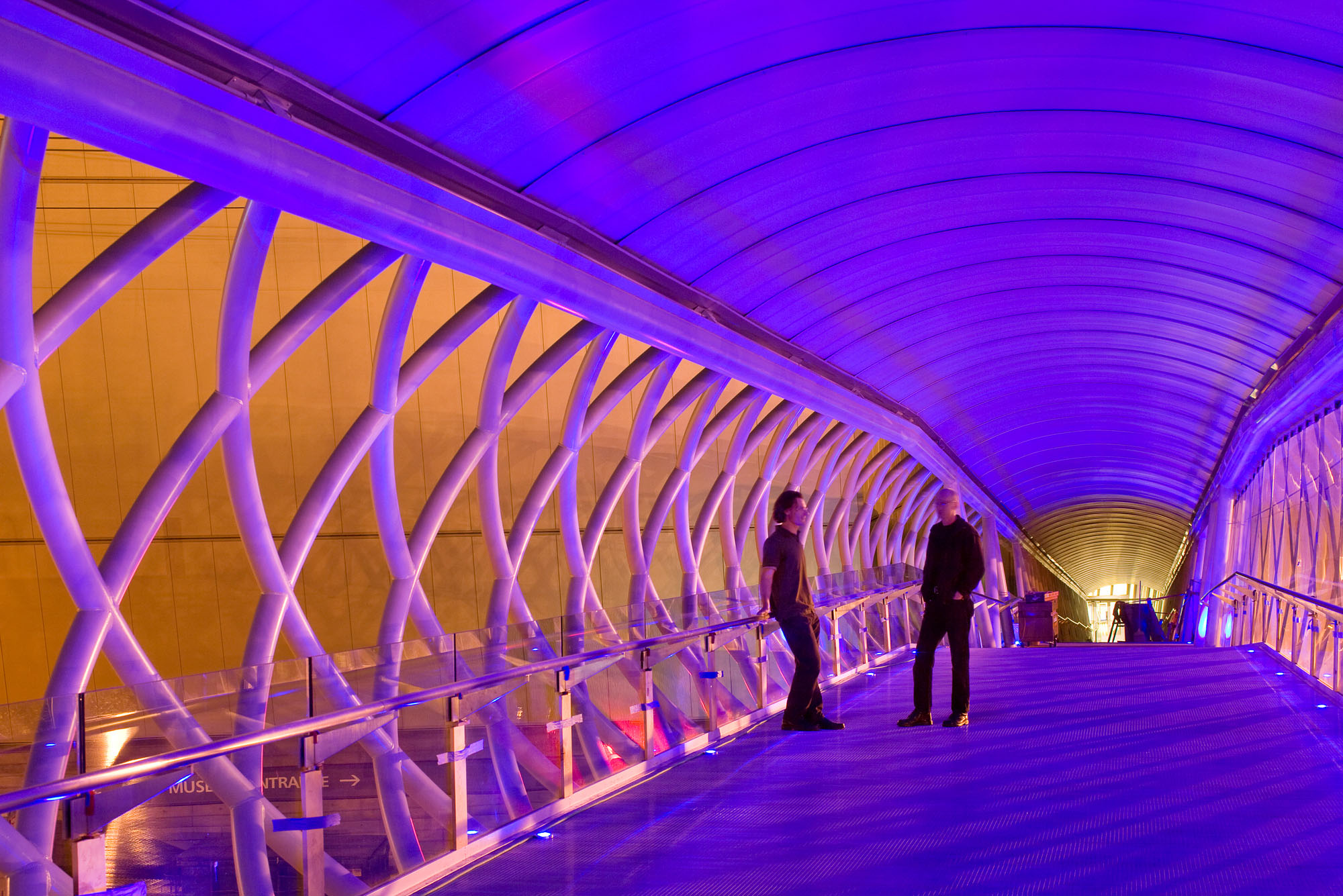
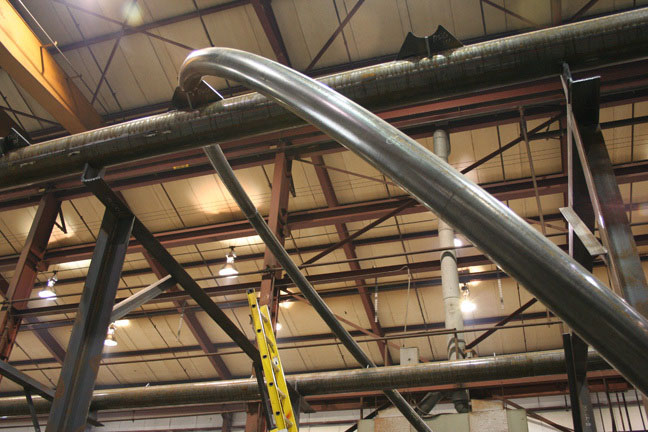
Threading the Needle
Precast structural shapes and cast-in-place concrete solutions were studied, but the narrow aperture through which the structure needs to pass—above the roadway clearance and below the power lines— limited the amount of structural depth that could be accommodated below the bridge deck. Using a steel truss allowed the structural depth to surround the partially enclosed interior space and also maintained consistency with the existing museum’s architecture.

